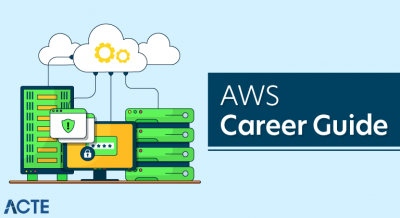
- Importance of Cell Uniformity in Battery Packs
- What is Cell Balancing?
- Why Cell Balancing is Important
- Types of Cell Imbalance
- Passive Balancing Techniques
- Active Balancing Techniques
- Balancing Algorithms
- Circuit Design for Balancing
- Balancing During Charging
- Impact on Battery Life
- Challenges in Cell Balancing
- Real-World Examples
- Advancements in Cell Balancing
- Conclusion
Importance of Cell Uniformity in Battery Packs
In battery-powered systems, especially lithium-ion battery packs with Artificial Intelligence Training, it’s crucial to keep the performance of individual cells uniform. Each cell can vary slightly in capacity, resistance, and self-discharge rate, which can result in imbalances over time. This phenomenon is why cell balancing is key; it helps the Battery Management System (BMS) maintain a similar state of charge (SOC) across all cells. This prevents overcharging or deep discharging of individual cells, which can lead to damage or failure.
What is cell balancing?
Cell balancing means equalizing the charge in each lithium rv battery cell within a multi-cell pack. In a battery pack with multiple cells connected in series or parallel, cells may have different voltage levels due to slight manufacturing variations, usage, or temperature changes.

Cell balancing techniques stops weaker or stronger cells from limiting the total performance of the pack. The passive balancing bms redistributes energy or dissipates excess energy to keep each cell at similar voltage levels, optimizing usable capacity and improving battery safety.
Why Cell Balancing is Important
- Maximizes Usable Capacity: Prevents the weakest cell from limiting the overall charge and discharge range.
- Increases Battery Lifespan: Avoids deep discharging and overcharging, which accelerate cell aging.
- Improves battery safety: Reduces the risk of thermal runaway caused by voltage imbalances, especially in lithium-ion packs.
- Maintains Performance: Ensures consistent power delivery and slows down degradation over time.
- Enhances Efficiency: Promotes even energy distribution, minimizing losses during operation.
Types of Cell Imbalance
- Voltage Imbalance: Cells show different terminal voltages even at the same state of charge (SOC).
- Capacity Imbalance: Variations in cell capacity cause some cells to reach full charge or discharge earlier than others.
- Resistance Imbalance: Differences in internal resistance lead to uneven current flow, heat generation, and performance.
- Self-Discharge Imbalance: Some cells lose charge faster when idle, creating SOC disparities over time.

- Long-Term Impact: These imbalances accumulate with usage and must be corrected to preserve battery pack performance and battery safety.
Passive Balancing Techniques
Passive balancing techniques is the most common technique due to its simplicity and low cost. It works by dissipating excess energy from higher-voltage cells as heat through resistors until all cells reach uniform voltage levels.
- Key Features: Simple circuit design, inexpensive, energy inefficient (energy lost as heat), used in low- to mid-cost packs.
How It Works: When one or more cells have higher voltages, passive balancing techniques reroutes current from those cells using resistors or transistor switches. Balancing stops once all cells align in voltage.
- Limitations: Wastes energy as heat, requires cooling design in larger packs, not suitable for high-capacity or fast-charging systems.
Active Balancing Techniques
Active balancing redistributes excess charge from higher-voltage cells to lower-voltage cells instead of dissipating it. This is done using capacitors, inductors, or converter circuits.
- Capacitor-based Balancing: Uses capacitors to transfer energy between cells.
- Inductor-based Balancing: Utilizes transformers or inductors for energy transfer.
- DC-DC Converter Balancing: Uses bidirectional converters for efficient energy movement.
- Advantages: High efficiency with minimal energy loss, ideal for large battery packs, supports fast charging system and extends lithium rv battery life.
- Drawbacks: Complex and costly, requires more space and precise control circuitry.
Balancing Algorithms
Cell balancing involves Artificial Intelligence Training more than just hardware; software algorithms in and the passive balancing bms control it. These algorithms determine when, how long, and which cells to balance.
- Voltage Threshold Balancing: Activates when voltage differences exceed a predefined limit.
- State of Charge (SOC) Based: Uses SOC estimates for more accurate balancing decisions.
- Time-Based Control: Executes balancing at regular intervals, independent of voltage or SOC.
- Current-Based Control: Modifies balancing behavior based on charge/discharge current levels.
- Temperature-Aware Balancing: Suspends balancing if cell temperatures are outside safe limits.
Advanced passive balancing bms platforms use adaptive algorithms that factor in cell aging, temperature gradients, and usage history to optimize balancing in real time.
Circuit Design for Balancing
- Passive Systems: Bleed resistors (100–330 Ω typical), MOSFETs or transistors for discharge control, temperature sensors for heat management, isolation circuitry to prevent shorts.
- Active Systems: Inductors, capacitors, or transformers for charge transfer, microcontrollers or balancing ICs for switching, DC-DC converters for voltage regulation, communication lines for cell status feedback.
- Design Goals: Compact layout for battery technology enclosures, effective heat management (especially in passive systems), robust isolation and safety, minimal energy loss, scalable architecture for larger packs.
Balancing During Charging
Balancing usually occurs during charging, particularly in consumer and automotive applications.
- Why During Charging: Cells reach upper voltage limits at different times, balancing prevents overcharging and optimizes charger input.
- Process: Charger initiates charging, passive balancing bms monitors voltages, balancing activates when thresholds are met, charging system continues until all cells are aligned.
- Idle-Time Balancing: Some BMS systems also balance during non-use periods to maintain energy alignment.
Impact on Battery Life
- Extends Lifespan: Prevents damage caused by overcharging or deep discharging of individual cells.
- Improves Charge Retention: Ensures cells age uniformly, preserving overall capacity for longer periods.
- Reduces Maintenance Needs: Balanced packs require fewer calibrations and replacements over time.
- Enhances Safety: Minimizes the risk of cell failure or thermal events due to voltage imbalances.
Without balancing, cells degrade unevenly, leading to premature pack failure from safety cutoffs or actual damage.
Challenges in Cell Balancing
- Cost vs. Complexity Trade-off: Active balancing offers better performance but increases design and BOM expenses.
- Heat Management: Passive balancing generates heat that must be safely dissipated, especially in dense packs.
- Scalability Issues: Larger battery packs demand more sophisticated balancing logic and hardware integration.
- Time Constraints: Balancing duration increases with greater cell voltage or capacity differences.
- Aging Effects: Cells degrade unevenly, requiring dynamic adjustment of balancing thresholds over time.
- Measurement Accuracy: Reliable balancing depends on precise voltage, current, and temperature sensing.
Real-World Examples
- Electric Vehicles (EVs): Tesla, BYD, and Hyundai use active balancing in their passive balancing bms to maintain performance during fast charging.
- Consumer Electronics: Laptops and smartphones rely on passive balancing to prevent overcharging and early cell failure during charging.
- Renewable Energy Storage: Systems like Tesla Powerwall and Sonnen use active balancing to handle large capacities and long idle periods efficiently.
- Drones and Robotics: Lightweight passive balancing is preferred to conserve space and simplify circuit design.
Advancements in Cell Balancing
- AI-Based Algorithms: Machine learning enhances BMS by predicting imbalances and optimizing balancing in real time.
- Modular BMS Systems: Enable balancing at both module and pack levels, improving scalability for large energy storage setups.
- GaN and SiC Switches: Advanced materials like Gallium Nitride and Silicon Carbide improve efficiency and reduce heat in balancing circuits.
- Integrated Circuits (ICs): Brands like Texas Instruments, Analog Devices, and NXP offer compact ICs with multi-channel balancing, monitoring, and protection.
- Wireless BMS: Wire-free systems reduce weight and increase design flexibility using RF-based communication for balancing control.
Conclusion
Cell balancing is a vital part of modern battery management. Whether for a smartphone or for the Artificial Intelligence Training of an electric vehicle, ensuring that all lithium rv battery cells work together is essential for safety, performance, and lifespan. As battery technology progress and energy storage grows increasingly important, innovations in balancing approaches, especially those that combine software intelligence with hardware efficiency, will be critical in shaping the future of sustainable energy.




